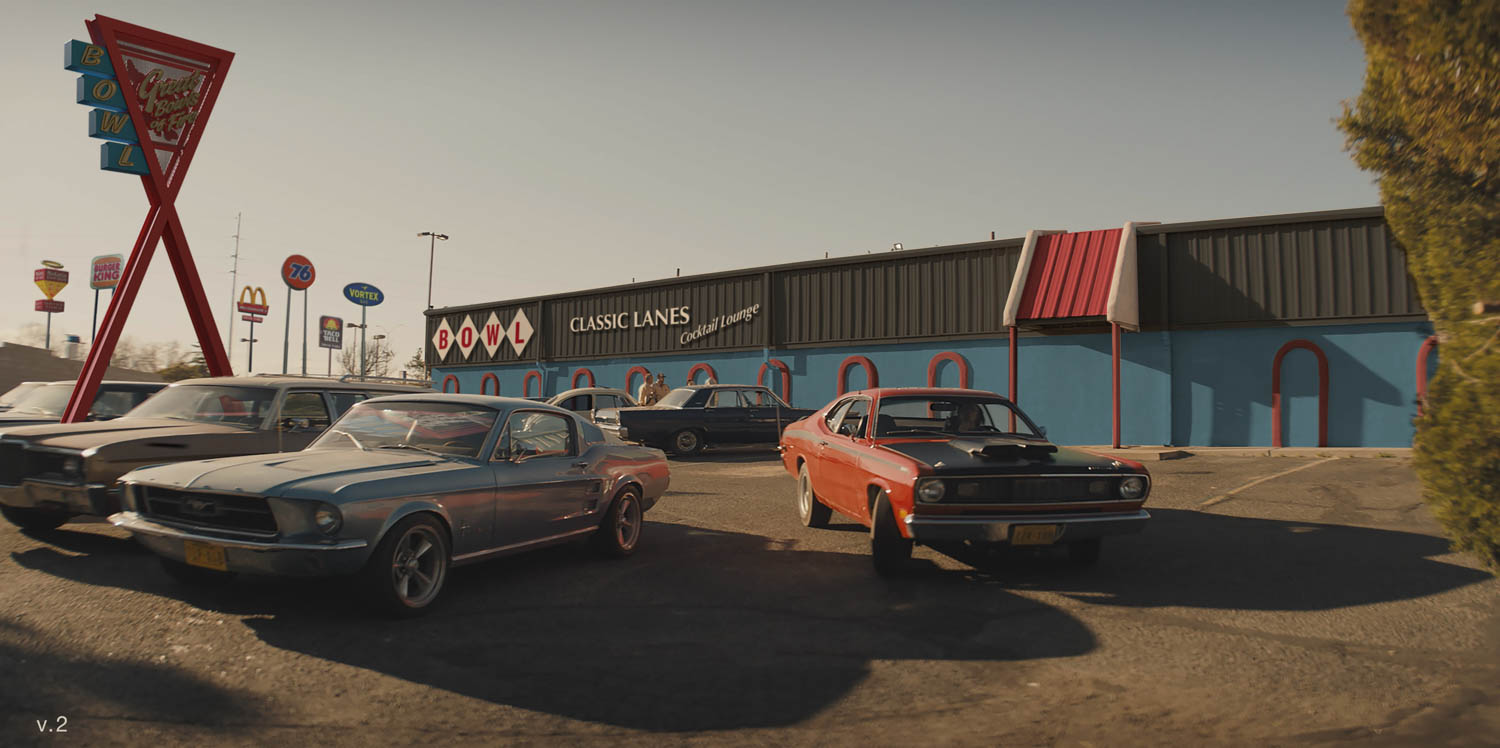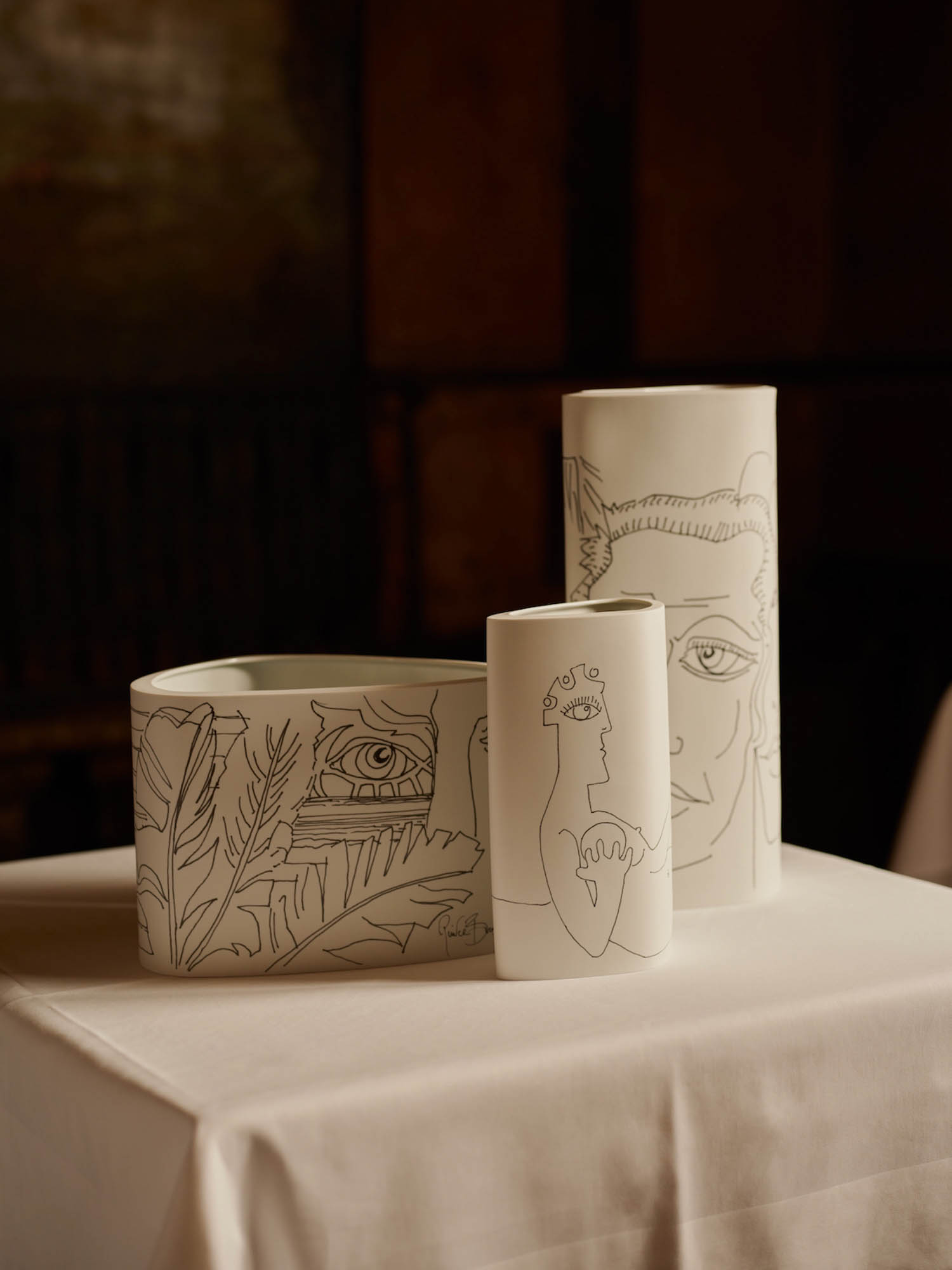Highlights from Eileen Gray Exhibition at Bard Graduate Center
Hard on the heels of last year’s Charlotte Perriand show at the Fondation Louis Vuitton in Paris comes an in-depth look at perhaps the other best-known woman of Modernist design: “Eileen Gray,” an exhibition at New York’s Bard Graduate Center that runs from Oct 13 to 28. (It was open for a time pre-pandemic, before the space was temporarily closed.)
Irish-born to an upper class family, Gray (1878–1976) lived in London for a time and attended art school there, but most of her life was lived in Paris and elsewhere in France. She became most famous for her furniture design—her metal side table consisting of a simple circular top and above a similar base is still a hot item, and ditto for her famous Bibendum chair, whose back is formed by rounded tubes creating a U-shaped back, as if the Michelin Man had turned into seating.
As with Perriand, her architecture got overshadowed somewhat by her furniture. Though not formally trained, Gray started designing buildings in her 40s and created at least one icon, the Cote d’Azur villa known as E-1027.
The Bard exhibition is divided into five main parts: her early life; her time in the 1920s running a Parisian store and gallery, a section which will feature her fabulous carpet designs; her collaboration with Romanian-born architect Jean Badovici, including the design of his home and studio; E-1027 as seen through plans, photographs and other documentation; and the rest of her architecture, including, surprisingly, a chic camping tent. There’s also a film component: In Conversation with Eileen Gray features excerpts from a 1973 interview she did.
Given that Gray didn’t become famous until late in her long life, the Bard show is a great chance to learn about a multi-talented designer who truly did it all.
Here are 10 highlights from the show.
Portrait of Eileen Gray by Berenice Abbott, 1926

Shot in dramatic profile, Gray looks every inch the 1920s artiste in her most well-known portrait, sporting a period bob, too. (The photographer, Berenice Abbott, is herself one of the 20th century’s greatest creators, famed for her black-and-white work.) Though her milieu was the famous creators of the day—from Rodin to Le Corbusier—Gray never got famous, at least not until she was much older. She later said it was not in her nature to “push” for her own work, as was natural for her male peers. She even used a male pseudonym early in her career, calling her gallery Jean Désert.
Juliette Lévy in her apartment decorated by Eileen Gray, 9, rue de Lota, Paris; photograph by Thérèse Bonney, 1930
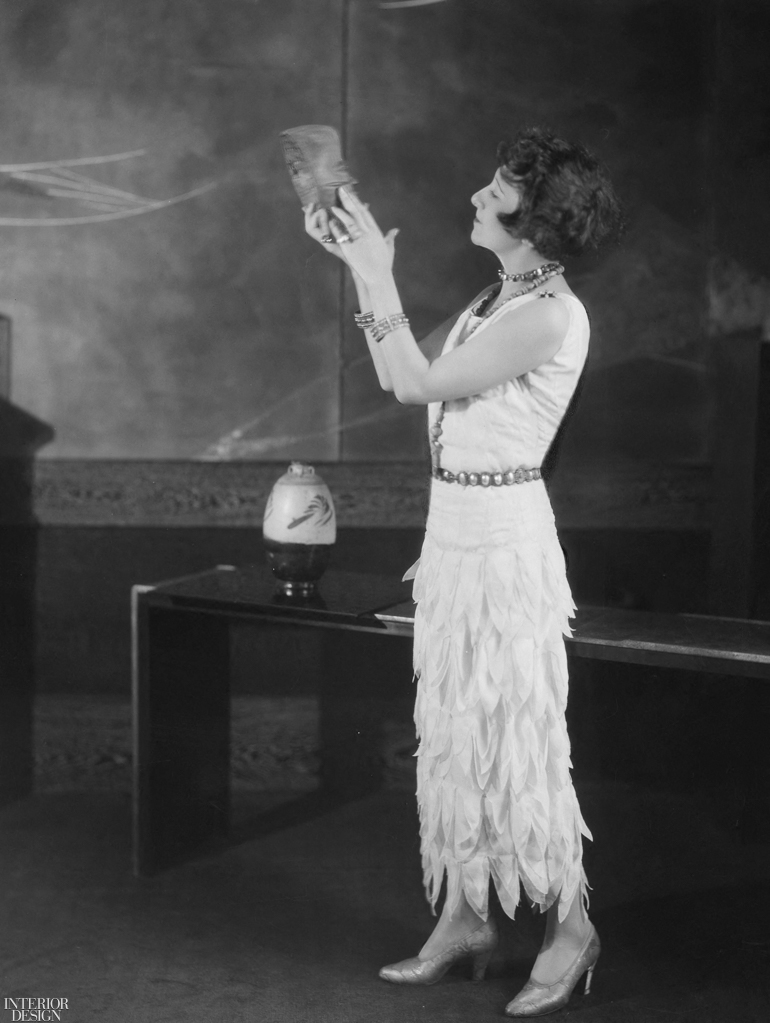
Levy was a milliner married to the head of the J. Suzanne Talbot fashion company. They turned to Gray to design their Paris apartment in 1917, the same year Gray’s lacquer work was featured in British Vogue. The home was meant to be a total work of art. Radical then and now, the design featured entryway walls made of lacquer bricks, geometrically patterned rugs and, later, Gray’s Pirogue daybed.
Rug, 1922-24

Gray designed many rugs throughout her life, beginning in the 1920s, with this wool example showing her interest in abstraction. Eventually she had her own carpet studio, to ensure quality. Her designs ranged from blocky, bold patterns that channels the Art Deco style to an almost minimalist look that reminds of an Agnes Martin painting. She saw no conflict between making indoor decorative objects and designing buildings, establishing her as an early avatar of the “maker” culture.
Table, ca. 1924
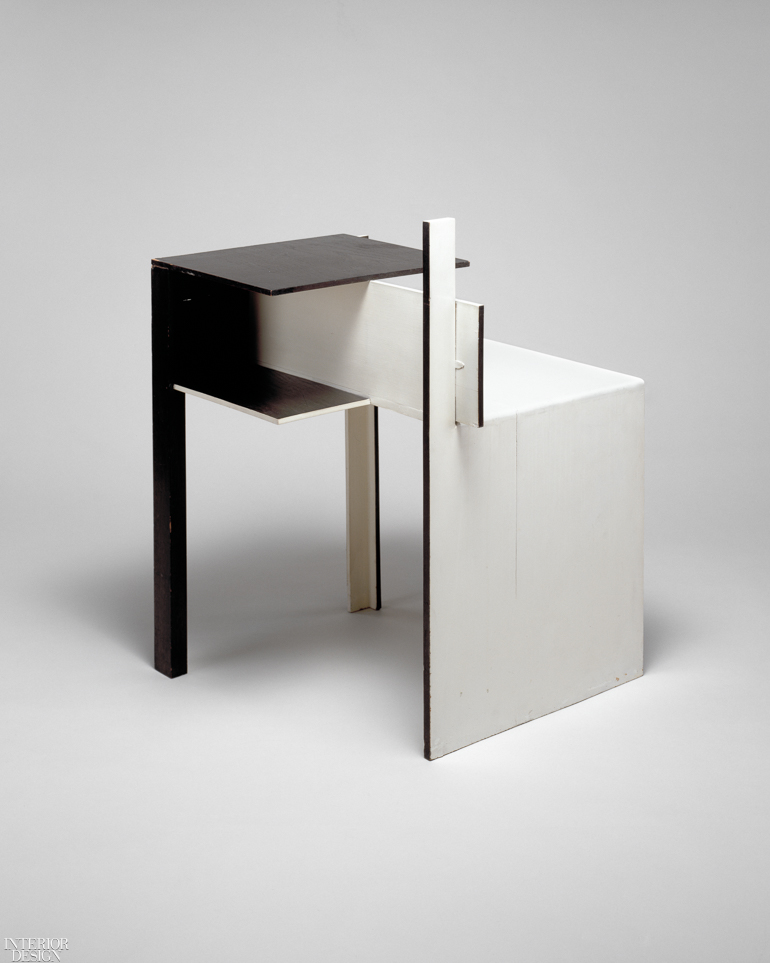
This painted table made of oak and sycamore, which looks totally abstract at first glance, is explicitly inspired by the work of De Stijl architect Gerrit Rietveld. The play between open and solid, black and white, and horizontal and vertical gives it a sense of solidity that demonstrates that furniture is just a miniature version of architecture.
Breakfast table, 1927

This lacquered tubular steel table was created for the E-1027 villa, and is among her most popular designs, still reproduced today. She made it in several versions, including aluminum, and very few originals are still extant. The main tray portion can be raised or lowered, with the intention of making it a breeze to have breakfast in bed. Gray later said she would have preferred thinner steel tubes, but this is one of the 20th century’s most durable designs.
Bibendum chair, 1927–29
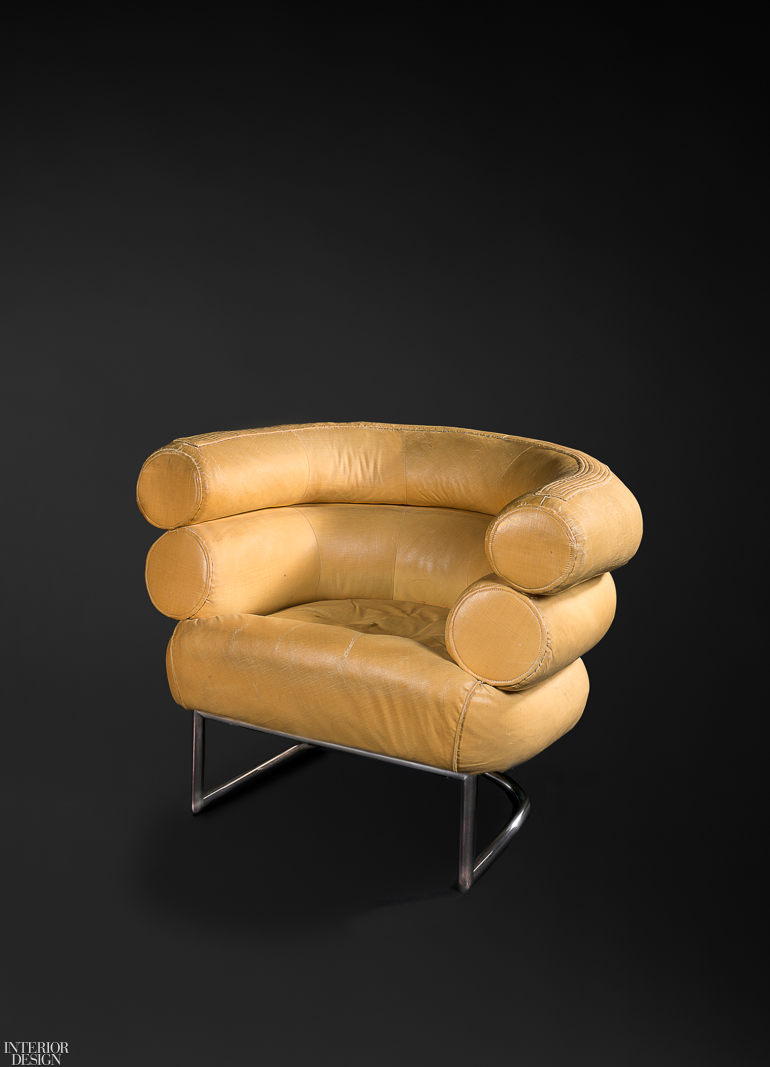
Gray was explicitly inspired by the Michelin man, the rotund mascot of the French tire company, when she created this chair in the height of the Jazz Age. The barrel-back is made of tire-like, puffy tubes—originally covered in cotton canvas, later in ivory leather—sitting on a steel base. In the 1970s, Gray first allowed this, and other designs, to be reproduced by Aram Designs of London. You can still buy a version.
Screen prototype, ca. 1918

This relatively early piece shows Gray’s interest in lacquering—it’s made of ebonized wood and metal. Always inspired by the arts of Japan, a trait she shared with Perriand and many other European modernists, she trained in the technique with a Japanese lacquer master, Seizo Sugawara. Some of the resulting designs, like this one, riff on the right angles favored by the De Stijl movement, recalling the canvases of Piet Mondrian. She also made lacquered tables.
E-1027 balcony, Roquebrune-Cap-Martin

Using Le Corbusier’s principles as her guide, and working with her lover Badovici—the house’s enigmatic name is code for the couple themselves—Gray completed this seaside villa in 1929. She only got two more houses built in her career, despite designing many more. E-1027, which still stands, is a white box set on pillars and has strong horizontal line. it also has movable walls inside, part of Gray’s interest in built-in flexibility. Corbusier was resentful of the design, and once defaced it by painting a mural on the walls when he was a guest there; he built a small cabin nearby, and, strangely and tragically, drowned nearby. His body washed up onshore right below E-1027.
Plan of Tempe à Pailla, Castellar above Menton, Maritime Alps, 1934

Tempe à Pailla was another, later house that Gray designed, post breakup with Badovici, meant to be a retreat for a single person. The structure, made of white-washed concrete, was more complex than E-1027, and was designed around the changing light throughout the day. The three-level house has great views, and it’s divided between more open spaces and more private ones. Nautical touches abound, including porthole-shaped windows. Gray once wrote, “A house is not a machine to live-in. It is the shell of man, his extension, his release, his spiritual emanation.” At age 83, she was still tinkering with the design of the house, adding louvers to the garden facade.
Tube lamp, ca 1930s

This simple, straightforward lamp is mostly an incandescent tube and not much else. The piece somehow refers to its own era—the chrome of the base was an Art Deco staple—while at the same time anticipating the Conceptual art of Dan Flavin some 30 years later. Gray did lighting throughout her career, from the glowing charm of the “Lanterne Japonaise” Lamp, ca. 1935, to the energetically modern “Rocket” floor lamp of 1923, both also in the Bard show. But the tube lamp was her most radically simple take on illumination.
